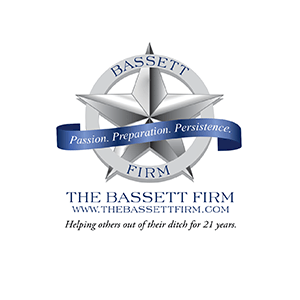In the past, challenging experts based on their lack of qualifications and under the 6 factors recognized in Robinson was the standard.i However, there is now a new method to challenging experts -the “gap analysis” introduced in Gammill.ii
The Texas Supreme court best described the new application of the “gap analysis” in Gharda USA, Inc. v. Control Solutions, Inc., 464 S.W. 3d 338 (Tex. 2015), where the Court held that:
Expert testimony is unreliable if there is too great an analytical gap between the data on which the expert relies and the opinion offered. Whether an analytical gap exists is largely determined by comparing the facts the expert relied on, the facts in the record, and the expert’s ultimate opinion. Analytical gaps may include circumstances in which the expert unreliably applies otherwise sound principles and methodologies, the expert’s opinion is based on assumed facts that vary materially from the facts in the record, or the expert’s opinion is based on tests or data that do not support the conclusions reached.
Recently, Texas Courts analyzing cases involving expert witness qualifications have focused on this “gap analysis” rather than the factors detailed in the Robinson case. This shift in focus is due to the fact that often experts called upon to testify on particular issues do not fit into the strict scientific mold contemplated by the Robinson factors. For example, the 5th Court of Appeals – Dallas has stated its preference for the analytical gap test over the Robinson factors when dealing with accident reconstruction testimony. The court then focused on “whether the expert’s opinions actually fits the facts of the case”iii in contrast to focusing simply on the overall reliability of each expert’s techniques or methodologies. Further, the 10th Court of Appeals – Waco recently used the analytical gap test to admit the testimony of two financial experts offering opinions on the value of a business. The experts used widely accepted valuation methodology, extensive data related to the case, and testified at length about the bases of their opinions. Thus, the court allowed the testimony because no analytical gaps were found.iv Several questions remain concerning the analytical gap test. Courts are still figuring out exactly what constitutes an unacceptable “analytical gap.” There is some confusion and overlap between what constitutes an unacceptable analytical gap (inadmissible) and what goes to the weight of the evidence (admissible). Even with this confusion, recent case law favors admission over exclusion.
Lessons to be learned from recent cases and trends:
1. Tailor your challenges to each expert. Is the expert presenting scientific evidence appropriately evaluated under the Robinson factors, or is Gammill‘s analytical gap evaluation a better fit?
2. Talk to an expert in the same field. Are there codified principles to which the expert has to conform? Are there better/more accurate technologies or methods that the expert failed to utilize?
3. Double-check the math. Not only to confirm that the addition/subtraction is correct but also to determine whether amounts have been presented in the proper form – paid/incurred (Section 41.0105); net loss after reduction for income tax payments (Section 18.091); etc.
4. Identify and evaluate assumptions. Don’t forget to check and double-check whether the expert’s assumptions match the facts as they are uncovered throughout the discovery period.
5. Proper disclosure. Be sure to timely and properly disclose the expert’s opinions and the bases for those opinions, including methodologies.
6. Preserve error. Failing to timely object to the relevance and reliability of an expert’s testimony will preclude you from challenging relevance and reliability on appeal.
Takeaways:
Excluding expert testimony is always difficult. One way to exclude testimony is to determine whether there is a significant analytical gap between the facts of the case and the expert’s testimony. However, be cautious in your analysis since the line between unacceptable analytical gaps and weight of the evidence issues has not been clearly defined. Therefore, presenting the court with as clear, concise, and clean an argument as possible is essential.
Despite your efforts, an expert may still be allowed to testify. In this instance you must evaluate whether an expert’s assumptions and supporting bases are steadfast or whether they shift during the trial, thus opening the expert up for impeachment. Further, research to determine what the opposing expert has said under oath in the past.
i E.I. du Pont de Nemours & Co. v. Robinson, 923 S.W. 2d 549 (Tex. 1995).
ii Gammill v. Jack Williams Chevrolet, 972 S.W. 2d 713 (Tex. 1998).
iii Greenwood Motor Lines, Inc. v. Bush, No. 05-14-01148-CV, 2017 Tex. App. Lexis 3917, 2017 WL 1550035 (Tex. App. – Dallas Apr. 28, 2017, pet. filed).
iv Pike v. Tex. EMC Mgmt., LLC, No. 10-14-00274-CV, 2017 Tex. App. Lexis 5217, 2017 WL 2507783 (Tex. App. – Waco June 7, 2017).

